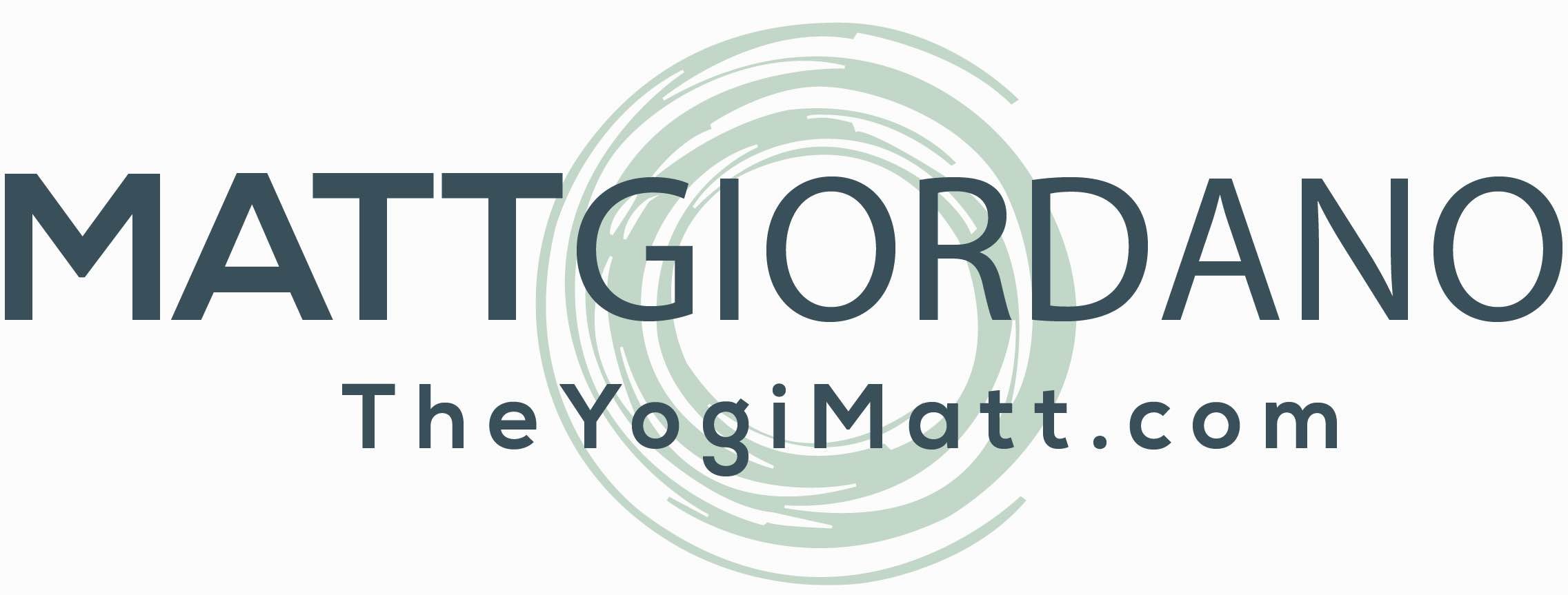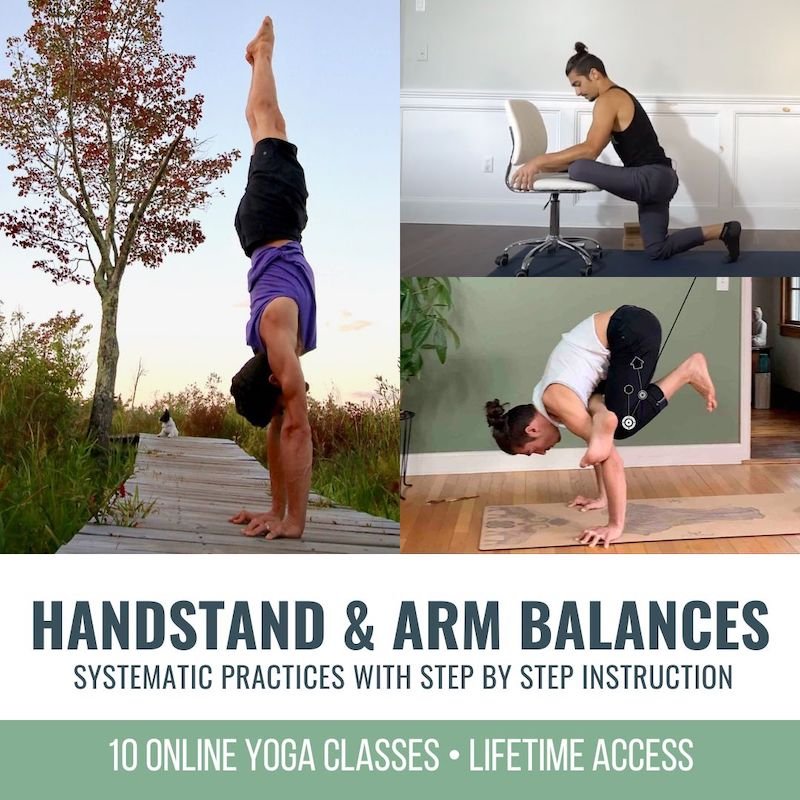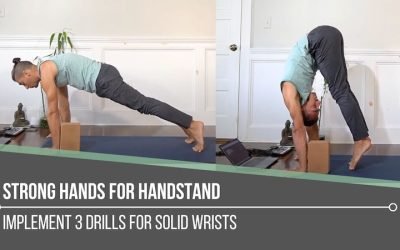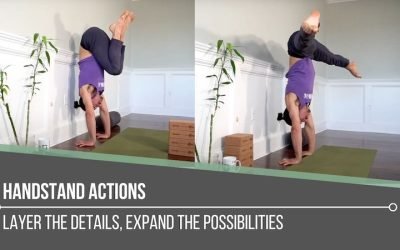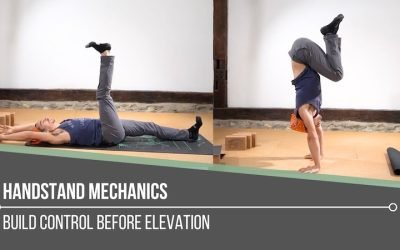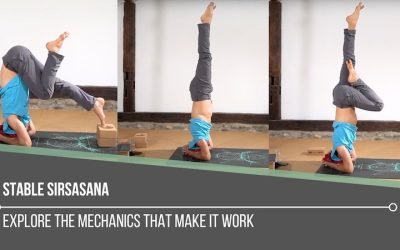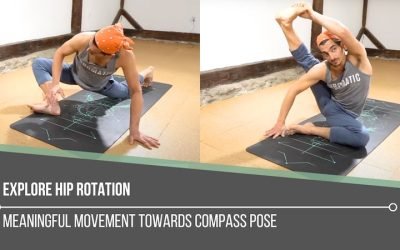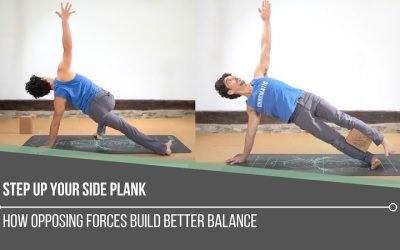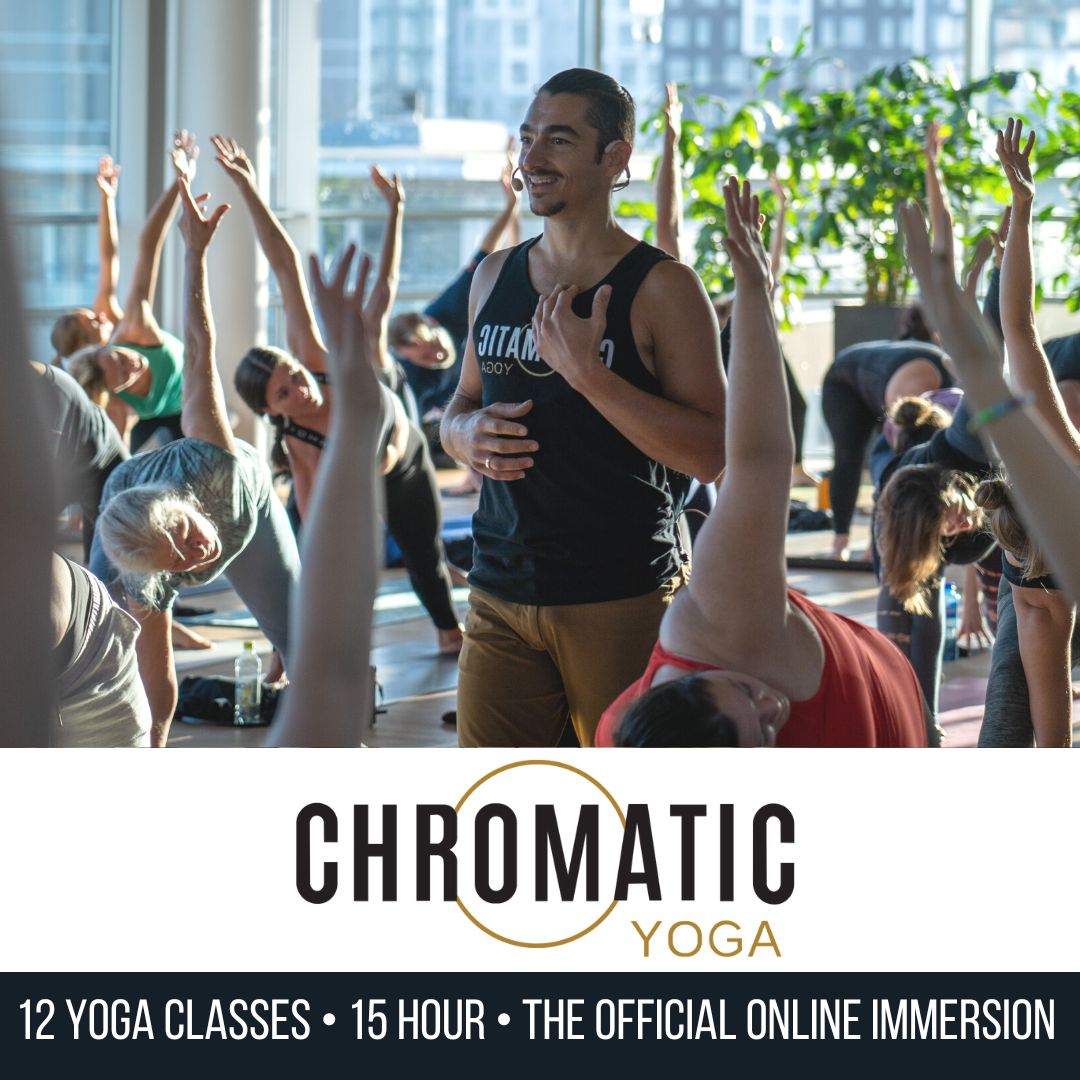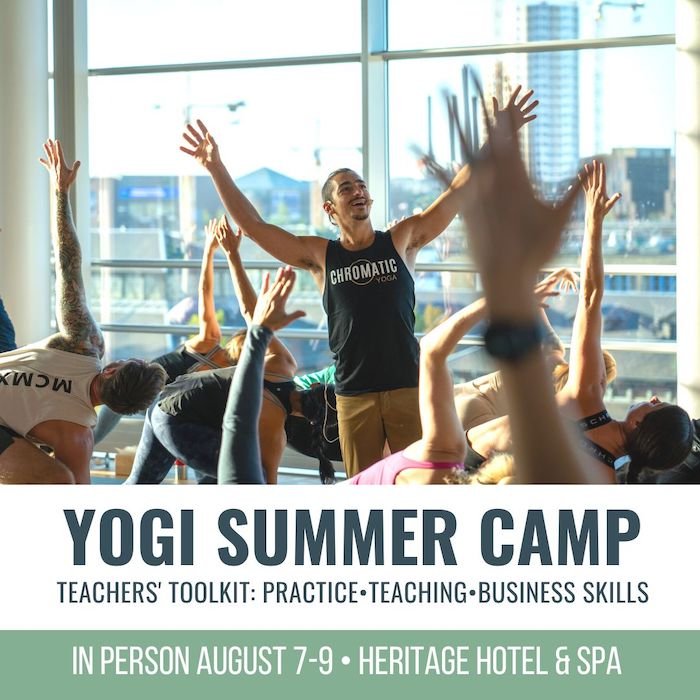Strong Hands For HandstandSTABILITYSTRONG HANDS FOR HANDSTAND When it comes to building strength for handstand, it starts at the base: our hands. Developing strong hands means targeting the wrist flexors, the very muscles that help create a trustworthy foundation....
Flying Pigeon Variations
Flying Pigeon Variations
eka pada galavasana
FLYING PIGEON VARIATIONS
When we think of different variations of postures, it’s easy to think that we should practice either “this on, or that one”. What we may not entertain is the magnitude of focus we must place on the “in-between”. We may not consider the thread that ties the variations together. The truth is, we must consider it all. The way that Matt teaches Flying Pigeon variations, offers us the perfect formula to understand how to progress from one step to the next, afterall, this is the essence of Chromatic yoga. We gain a deeper understanding of how to both master the “in-between” and the variations themselves. The 2 Flying Pigeon variations Matt demonstrates in today’s video are joined together by what he calls “Variation 1.2” ; it’s the bridge that creates a more seamless connection. Let’s examine the path that outlines the actions towards success in this arm balance.
HANDSTAND AND ARM BALANCES
REGISTRATION NOW OPEN
- 10 Chromatic Yoga practices with founder Matt Giordano
- Full length 75 minute classes
- Each Yoga class includes handstand drills and 1 arm balance breakdown
- Each class includes warm ups, sun salutations, standing postures and preparatory postures for the selected arm balance of the day
- Improve your body awareness and advance your practice
- Technique, biomechanics, and alignment at the forefront
- 12 Continuing Education hours with Yoga Alliance
- 12 Accredited Hours with the Chromatic School of Yoga
- Step-by-Step instruction for increased accessibility
- Improve strength, balance, flexibility, and proprioception
- Appropriate variations and modifications for all levels
START WITH THE HIPS
Before we even tackle the variations, we must prepare the body. Flying Pigeon variations will of course require both hip opening and hip strength.
The first preparation we see in the video is a hip stretch. In this preparation, we set up with a similar position to chair pose, except that we create a “figure 4” with one leg, patterning what the posture looks like (having one shin parallel to the front of the mat. If we want to reap the benefits of the hip stretch, three of the key actions are anterior tilt of the pelvis, sending the hips back, and bending deeply at the knee of the standing leg, which is where the stretch is going to happen. Matt also demonstrates how we may deepen this stretch. He does this by taking the hand opposite to the heel of the foot that’s crossed over and gently pushing further.
WATCH THE VIDEO
FLYING PIGEON VARIATIONS: THE PRECISION PATH TO ARM BALANCE SUCCESS
ACTIVE PIGEON POSE
In active Pigeon pose, we nurture both flexibility and strength. The posture calls for the shin of the front leg to be more parallel to the front of the mat once again. This time however, instead of a passive stretch, Matt teaches us to actively press down through the front shin while pulling the back knee towards the front of the mat. We’ll see later how that latter action lends well to Flying Pigeon 1, due to the positioning of the back leg towards the chest. What we cultivate is activation of the buttock muscles (from pressing the shin down) and hip flexor activation (pulling the back knee forward and slightly downward). If we are hypermobile in the hips, it’s imperative that we implement strengthening techniques like these ones in order to create the stability that’s also required for Flying Pigeon variations.
200 HOUR ONLINE TEACHER TRAINING
GET CERTIFIED & DEEPEN YOUR YOGA PRACTICE
- Deepen your yoga practice
- Build confidence speaking in front of groups in person and online
- Learn foundational class structures and templates
- Learn techniques for a wide range of yoga postures
- Get certified and highly qualified to teach yoga
- Yoga Alliance Globally Recognized Certification Program
FLYING PIGEON 1 & 2
Flying Pigeon 1
In this variation, Matt places a block under the foot of the leg that provides support and balance until it potentially lifts up and away from the block. Now, understanding what is good for your own body and practice at a given time means that we can keep that foot down as we learn more forward into the posture. Why would this be a good option? It’s possible that we are not ready to balance, either due to fear, or maybe it’s that we need to stay there to continue to develop more strength in the wrists (which can also reduce fear because the body is more ready to handle the weight). If we lift the leg up and pull the knee into the chest, then we are also utilizing the hip flexor strength we’ve cultivated.
Flying Pigeon 2
In this “next step” we lean more forward in order to take the leg higher. Before we extend it with the intention of straightening it out, we can execute the “Flying Pigeon 1.2” as Matt referred to it in the full class. This means pulling the heel in towards the buttocks. It’s almost like a little extra stop before our next destination.
300 HOUR ONLINE TEACHER TRAINING
GET 500 HOUR CERTIFIED AS A MASTER TEACHER
Master your skill set as a teacher through refined techniques, anatomy, biomechanics, sequencing, philosophy, meditation techniques, theming, yoga business, and much more!
- Get 500 hour certified
- Learn anatomy, biomechanics, asana techniques
- Expand your teaching skills
- Masterful sequencing and verbal delivery
- Learn meditation and breathwork techniques
- Transformative tools: theming, dharma talks, satsang
DON’T DISMISS THE IN-BETWEEN
Matt emphasizes that it’s not necessarily a clear jump from one variation to the next. Yes we establish a foundation, but we must also investigate the actions we can work on and develop between each variation. The roadmap between two variations may call for a few twists and turns before we execute the “final stage”. As Matt says in the clip, extending the leg straight out requires a tremendous amount of strength in the gripping of the ground and leaning forward.
In Chromatic Yoga, we learn to take a bite size approach. We go through each step with intention, curiosity, and a thirst for knowledge that always leads us to our highest potential.
Register for Matt’s current online immersion Handstand & Arm Balances to dive deeper into this understanding.
If you are striving to develop these practices for yourself, but also have a calling to teach, the next round of Matt’s online 200 & 300 Teacher Trainings begin in February. Secure your spot today!
The 200 Hr. Teacher Training: Click Here to See the Next Start Date
The 300 Hr. Advanced Teacher Training: Click Here to See the Next Start Date
Article by Trish Curling
Video Extracted From: Handstand And Arm Balances
ONLINE ANATOMY COURSE
- Accessible, exciting, and easy to learn
- Anatomy and biomechanics for yoga
- Appropriate for both teachers and students
- Learn joint alignment vs pose alignment
- Demystify yoga poses and transitions
- Release aches and pains
- Learn how to avoid common injuries
- Caters to all levels with modifications and props
- 20 hours Continued Education Credits with Yoga Alliance
- 20 hours toward Chromatic Yoga Certification and 300 Hour
- Lifetime access
Continue Learning
Strong Hands For Handstand
Handstand Actions
Handstand ActionsLEAN, GRIP, PUSHHANDSTAND ACTIONS Handstand isn’t something we conquer in a single class, it’s a layered process that demands repetition and refinement. There are certain key handstand actions that are non-negotiable: lifting the shoulders up to the...
Handstand Mechanics
Handstand MechanicsINVERSIONHANDSTAND MECHANICS Stability, strength, and coordination come together in the pursuit of mastering handstand mechanics. One of the most critical foundations is internal rotation at the hip joints, which can aid with certain entries and...
Stable Sirsasana
Stable SirsasanaHEADSTANDSTABLE SIRSASANA Creating a stable Sirsasana is less about the final pose and more about the mechanics that lead us there. From weight transfer and spinal alignment to hamstring flexibility and shoulder engagement, each layer matters. Unlike...
Explore Hip Rotation
Explore Hip RotationSURYA YANTRASANAEXPLORE HIP ROTATION Hip rotation isn’t just an anatomical concept—it’s an open invitation to become more intimate with our body’s story. In yoga, we often live in lateral (external) rotation, especially in hip-opening postures....
Step Up Your Side Plank
Step Up Your Side PlankVASISTHASANASTEP UP YOUR SIDE PLANK Side Plank might look simple, but true proficiency starts in the details. One of the keys to refining the posture is learning how opposing muscle groups create an isometric contraction—a subtle engagement that...
THE FREE TECHNIQUE PACK
When You Subscribe, You Will Get Instant Access to
- the Technique Pack: 15 yoga pose breakdowns
- exclusive online course discounts
- exclusive blogs and videos
